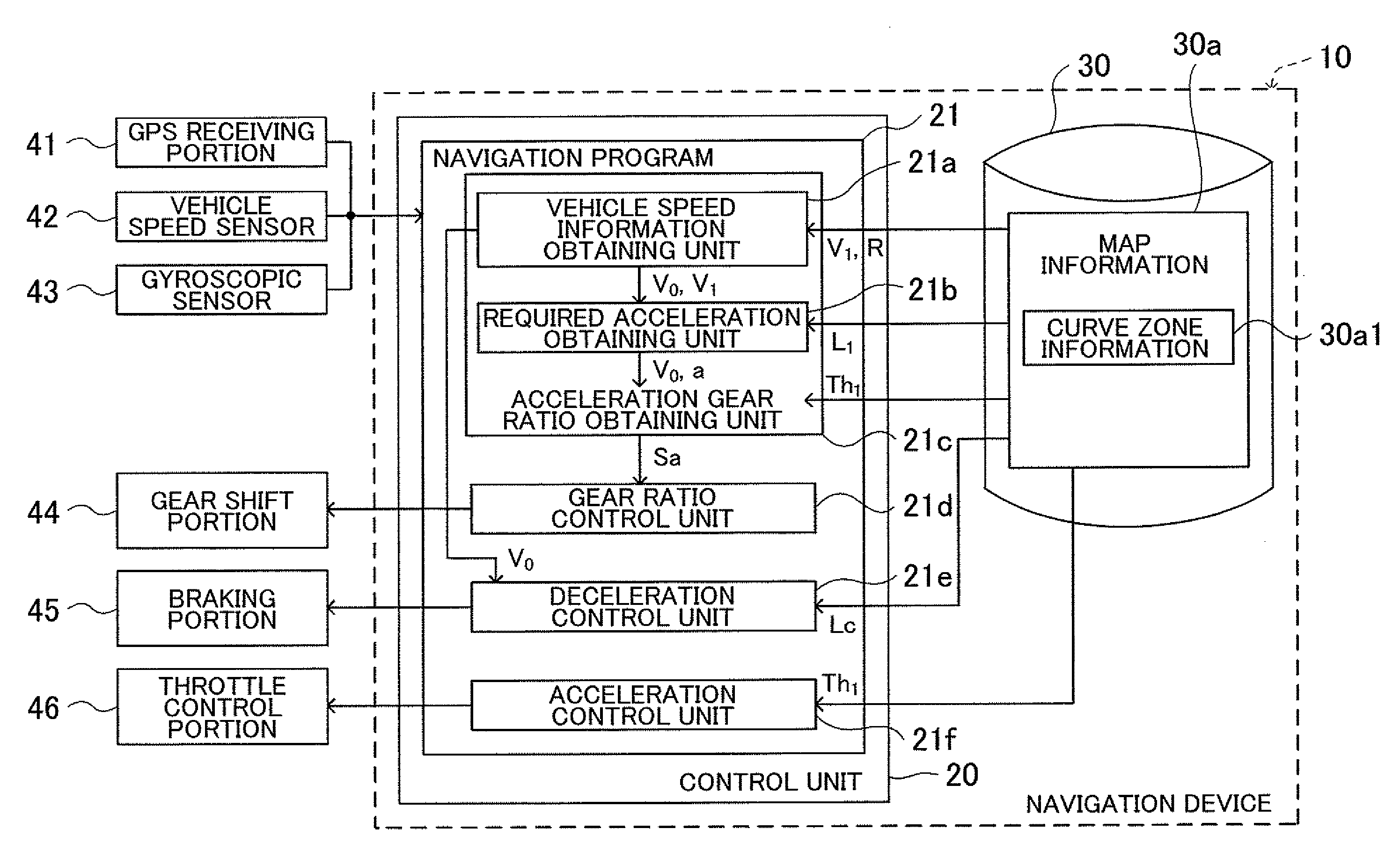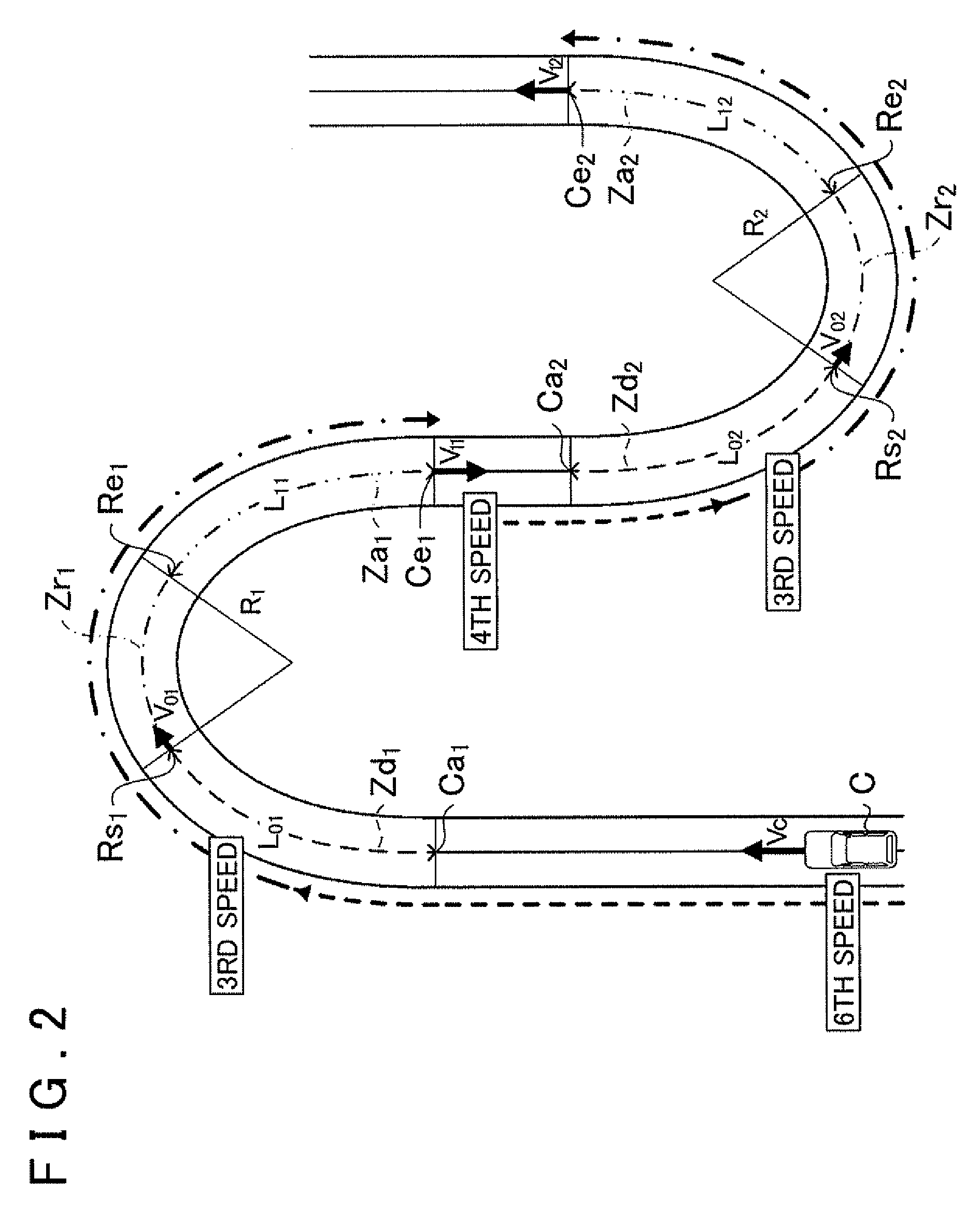[0008]In order to achieve the above object, the present invention acquires a first acceleration gear ratio for accelerating a host vehicle in a first acceleration zone, and acquires a second acceleration gear ratio for accelerating the host vehicle in a second acceleration zone. By executing a control that sets the gear ratio of the host vehicle to the first acceleration gear ratio in a first deceleration zone, the gear ratio of the host vehicle becomes the first acceleration gear ratio before the host vehicle enters the first zone. Therefore, the host vehicle can travel the first zone in the first acceleration gear ratio, and also continue running in the first acceleration gear ratio even after traveling the first zone. However, when the host vehicle must decelerate with respect to the second zone while running in the first acceleration gear ratio, a control is executed that sets the gear ratio of the host vehicle to the second acceleration gear ratio.
[0012]The acceleration gear ratio obtaining unit is not limited provided that the first and second acceleration gear ratios can be acquired for accelerating the host vehicle after traveling the first and second zones, respectively. The first and second acceleration gear ratios are not limited provided that they are gear ratios capable of smoothly accelerating the host vehicle after respective travel through the first and second zones. Accordingly, the first and second acceleration gear ratios should be gear ratios capable of acceleration and continuing travel without generating sudden changes in speed or acceleration and without inducing unstable behavior in the host vehicle.
[0013]For example, various other configurations may be used in which the acceleration gear ratio is acquired based on an amount of acceleration for accelerating the host vehicle from the target vehicle speed for traveling each section to the recommended vehicle speed after traveling each section, provided that, for the respective first and second zones, a gear ratio is acquired that enables acceleration from the target vehicle speed to the recommended vehicle speed, and a gear ratio is also acquired that enables travel at a recommended vehicle speed faster than the target vehicle speed when the rotational speed of a drive source is equal to a specific value. In other words, by setting the gear ratio of the host vehicle to the first and second acceleration gear ratios before completing travel through the first and second zones, respectively, acceleration should be possible without changing the gear ratio at the acceleration phase after traveling the first and second zones. Thus, the host vehicle can be smoothly accelerated after traveling the first and second zones.
[0019]In other words, a point at which the control for changing to the second acceleration gear ratio is specified based on a predetermined deceleration, aid newly defining the point at the end point of the first acceleration zone shortens the length of the first acceleration zone compared to before the correction was performed. In addition, the speed assumed at the end point of the first zone newly set in the case of accelerating the host vehicle at the first required acceleration is multiplied by a predetermined coefficient to re-calculate the required acceleration for reaching the first recommended vehicle speed at the post-correction end point of the first acceleration zone, which is set as the first required acceleration. Consequently, the impression received by the driver during travel with consecutive acceleration and deceleration can be fine-tuned. In particular, when the coefficient is less than 1, more gradual acceleration and deceleration can be achieved compared to the case of no correction, which can create the impression of smooth travel. Obviously, even if the coefficient is greater than 1, adjustment of the value makes it possible to vary the impression of the driver, in terms of emphasizing safe, smooth, or sporty driving.
 Login to View More
Login to View More  Login to View More
Login to View More 


